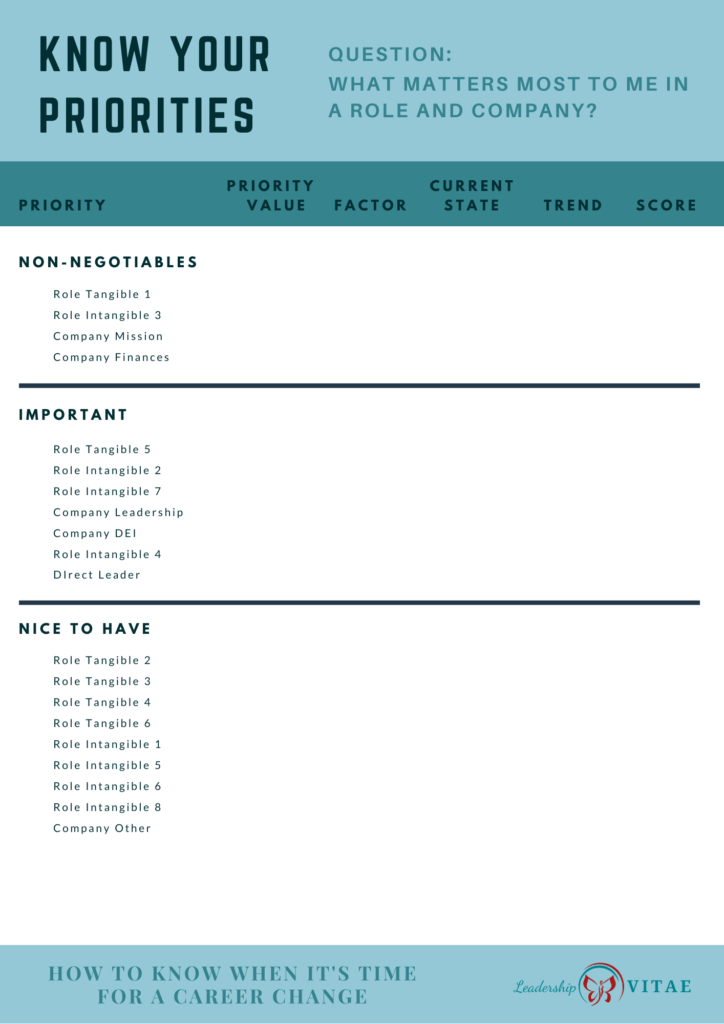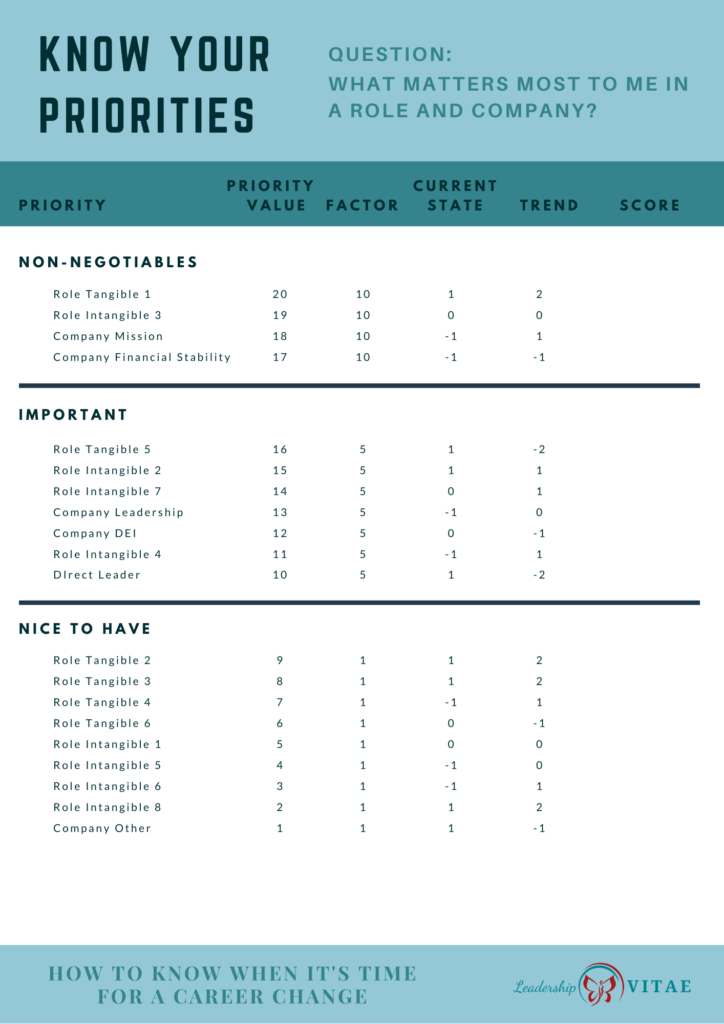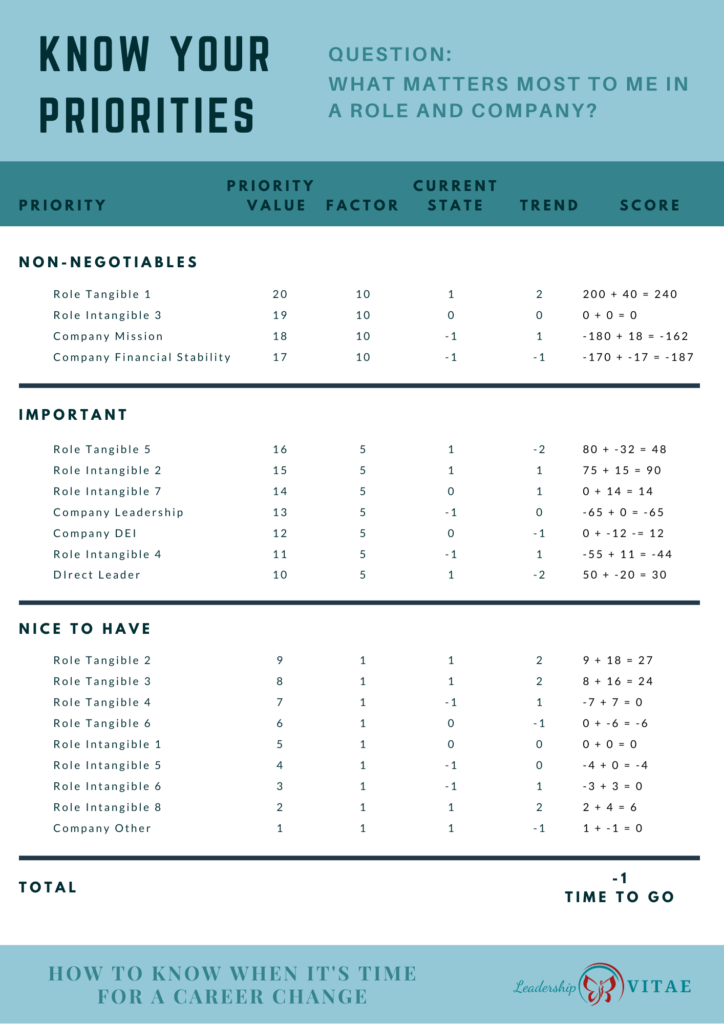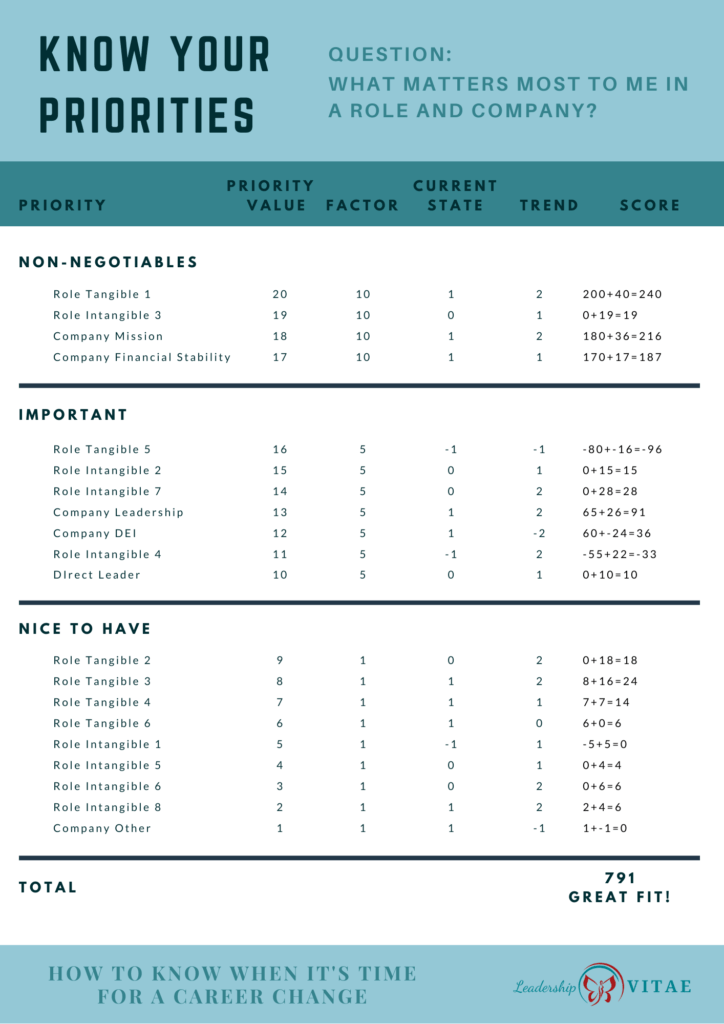
Years ago, I was struggling with finding my “next thing.” I ended up developing a list of criteria to determine what was most important to me, which had changed after becoming a parent.
“My five things” still guide me when I think about new roles, and I have updated them over the years as my life and career needs have changed. They are my gold standard for job hunting.
Recently, a friend reached out and asked if I had a framework that could help her. She knows I’ve got “rules” for about every darn thing and would likely have something useful as she faces a career dilemma.
In this case, it’s not about pursuing a new opportunity, but deciding when to move on from a current one. How and when do we know it’s time to move on, and start said job hunt?
I quickly realized I didn’t have one. For years, new opportunities or life events popped up long before I was considering whether a role was still right for me.
After some searching, I didn’t find anything that felt quite right. I work in data and analytics, so I decided to build a model to help with decision-making
Decide what’s important
When considering whether to stay in a role or company, the first step is figuring out what’s important.
Ask yourself, what do I want in a role? These may be tangibles, like pay or benefits. Or intangibles, like autonomy or a challenge. Free think a list that includes both.
Next, consider what you want in a company. Maybe you want to align to a company’s mission, or belong to one with a leadership team that you can see yourself in. Add company characteristics to the list that matter to you.
Once you have your list, force rank it from most important to least. Begin with non-negotiables. These are the items you are unwilling to compromise on. Next are truly important. At the end should be the nice to haves.
Draw a line under non-negotiables and another below important. You should have three sections.
Give it weight
Once we have our prioritized list, we can start to size up how our current role and company are doing relative to what’s important to us.
First, set a priority value based on the total number of items. Start at the bottom and give it a priority value of 1. For each item above it, add one and assign it the value. A list of 10 items would assign a priority value of 1 to 10, with 10 given to the most important item. A list of 20 would have priority values of 1 to 20, with the most important item receiving 20.
In addition to setting a priority value, we want to weight our items based on relative importance. In this case, use a factor of 10 for non-negotiables and a factor of 5 for those that are important. Nice to have’s get a factor of 1.
These assignments ensure our most important priorities, and non-negotiables, receive the most weight in our decision making process.
Trending or not so much
When we interview, we get a small sense of the role and company. Enough, hopefully, to make a decision whether it’s the right place for us. We learn so much more once we are in place. Things that seemed true on the surface, we now have a deeper and more accurate perspective.
Consider the current state of the role and company. Is our priority present, not present, or somewhere in the middle? Assign a score using the following values:
- Not present, assign a -1.
- Somewhat present, assign a 0.
- Fully present, assign a 1.
Also consider how things are trending. While in some cases a priority may not be present, it could be on the way. It’s important to consider if there is hope on the horizon, or if the hope is on the way out. Assign a score based on the current trend values below:
- No path or discussion, assign a -2.
- Things are eroding, assign a -1.
- Support, but no action yet, assign 0.
- Commitment is there and on the path, assign a 1.
- Nailing it and maintaining, assign a 2.
What’s the score?
Once we’ve determined how a company and role are performing, and the trend, it’s time to figure out the score. How do this role and company measure up to our priorities?
For each item, dust off the calculator and do the following math:
(Priority Value * Factor * Current State)
+ (Priority Value * Trend)
Score
Numbers will vary greatly based on the number of overall priorities, how many are non-negotiables, important, or nice to haves. In every case, they will either be negative or positive, with the higher number the better.
If the number is highly positive, good news! It’s a role and company that’s a great fit and it’s worth sticking around.
However, if the number is approaching zero, or negative, it means there are not enough positives and/or the current state isn’t trending in the right direction. In this case, it’s likely time to start looking for a new role or company.
In some cases, it’s enough to look at the non-negotiables. If they are not present and not trending in the right direction, even if the number is positive overall, it may be time to start looking as well.
Should I stay or should I go now?
When my friend asked for a framework, I didn’t expect to get inspired by the Clash, but that’s what popped into my head as I started working on it.
I’m not sure yet about her decision, as she’s still considering her criteria. So far, she’s agreed the framework and scoring model will be helpful to approach the decision in an objective way.
It can be easy to get caught up in the moment or be reactive in our decision-making. Given the impact of a career change, it’s worth taking a step back to reflect. Whether it’s this model, or another approach, having objective criteria for evaluation can be helpful when deciding if it’s time to stay or go.
* * *
What method or criteria have you used to make a career change decision? Please share your thoughts and experience in the comments.












